Gearing Up to Teach-in-Japan!
Top photo: pAC_tonko on PhotoAC
Have you imagined yourself with a work-life alignment? Indulging yourself in a new place rich in culture and people? Getting paid to have fun? If this is the life you’ve been dreaming of, Japan is the right country to make this happen!
Handle Your Resources Well
Japan has always been one of the top list most visited countries in the world. Tourists fall in love to Japan’s charm every time they visit, so how much more if you live and work here for good. One of the requisites in teaching English in Japan is flexibility, from the place you will be assigned to, the people, and the food, but one thing Japan can guarantee is that each city has something great to offer.
Great in terms of salary, great benefits and great supports provided such as housing, health and social insurance, transportation allowance, and most of all the programs organized for the teachers and students to experience cultural exchange by interacting using the English language. You will also be provided with vacation leave with pay, so plan ahead of time and explore Japan as much as you can. Remember you are paid to have fun.
Manage Your Expectations
Working in Japan is a humbling experience but at the same time it is overwhelming if you have a different perspective. So, know how to manage your expectations.
First time travelers might find the train system in Japan a bit complicated, so it would be best to study a bit or download navigation applications on mobile phones like “Navi time” before coming to Japan. Always be on time at the train stations otherwise you will miss your train and wait for the next departure.
Prepared rechargeable travel cards is a game changer in Japan since you pay and move around the city using a single card conveniently but still don’t forget to bring cash outside since some shops or busses don’t take IC cards.
You need to pay for almost everything you need in Japan but If you know the right places to shop for a right price it would make your experience cost-effective. Shops and convenience stores are almost at every corner of the streets and could just grab anything you want yet manage your expenses correctly.
Meet The Expectations
As a foreign English teacher, you are the ambassador of your country, the medium to share your life to your students, to make them wonder, be curious and learn more from you by communicating through the English language.
Be Functional as much as possible in schools and take all the opportunities you have to be visible to the students and make it to your advantage to expose them in a normal English conversation. Follow the rules of the school, respect the school’s system and stay professional at all times.
Be Mindful
You have a lot to gain in Japan, but there are also things that’ll be different. Real time spent with family or friends, your habits, food, garbage disposal system and attitude towards work Japanese are very passionate of what they are doing and it’s evident from the result of their services. Being on time is a standard and in Japan coming to work early is an effort and manifestation of moral values which is one of the standards observed in a working environment in Japan.
Disposal system in Japan might sound complex to others but you will learn a lot of skills by following this simple system in daily manner. Japanese are very responsible and organize of their things, so if we can do the same during our stay in their country it would be a lot easier for everyone.
Japan is just like other countries, there are roles and individual responsibilities to follow. There are hustles and difficulties along the way but if you are mindful of what you have while you are in a different country and grateful of your experience, everything is possible and feasible.
Know your resources well, manage your expectations and always be mindful. Good luck, and have fun!
Ready to begin your own teach-in-Japan adventure? Apply with Borderlink today!
Top photo: pAC_tonko on PhotoAC
All other content (text) created by the original author and © 2023 MUSUBI by Borderlink
Top photo: yuzu2039さん on PhotoAC
Welcome again to Best of MUSUBI, where we revisit articles from the past and breath new life into them with updated information and photos!
If saying goodbye to the warmer months is hard for you, you aren’t alone. In the last few years, the COVID-19 pandemic has shifted the way many of us perceive time. 2023 is at an end and it’s nearly December. Now winter is upon us, and along with coronavirus, there’s also the seasonal flu and lesser colds to contend with.
Fortunately, you can take several preventative measures to counter all of the above and hopefully enjoy a healthy end of the year.
Remember to:
● Wash your hands frequently with soap and water for 20 seconds, or use an alcohol-based hand sanitizer. You’d be amazed what this simple act can do to help cut down on germs.
● Cover your cough and sneeze, dispose of tissues and wash your hands immediately afterwards.
● Regularly clean and disinfect surfaces you use often, such as benchtops and door handles.
● Avoid extended contact with people who are unwell with cold or flu-like symptoms.
● Stay home if you yourself are unwell and especially if you have a high temperature.
● Avoid touching your face, especially your eyes. If you must touch your eyes, use a strong tissue, but try to avoid doing it until you have just washed your hands.
● Avoid unnecessary bodily contact. It’s virtually impossible on crowded city trains, but do what you can.
● Indoors and in crowded areas, use a mask if you are feeling ill to mitigate the spread of germs.
And finally…
In the winter, particularly as the holidays near, we need to remember to balance minimizing risk with enjoying socialization and seasonal festivities. Make sure you bring some balance into your social life, but keep in mind that that while the worst of the pandemic is behind us, sickness- be it the flu, coronavirus, common cold, whatever- will always be with us. Take care of your body, but don’t forget to take care of yourself mentally as well. Stay safe, and happy holiday season!
Photo Credits
Top photo: yuzu2039さん on PhotoAC
All other content (text) created by the original author and © 2023 MUSUBI by Borderlink
A Journey into Japan’s Spiritual Heart in Nagano City
One of the things I was excited about living in Japan is the opportunity to visit shrines and temples. I’ve always been captivated by Japan’s unique architecture and its rich spiritual beliefs and this excitement drove me to finally come here and immerse myself in their culture.
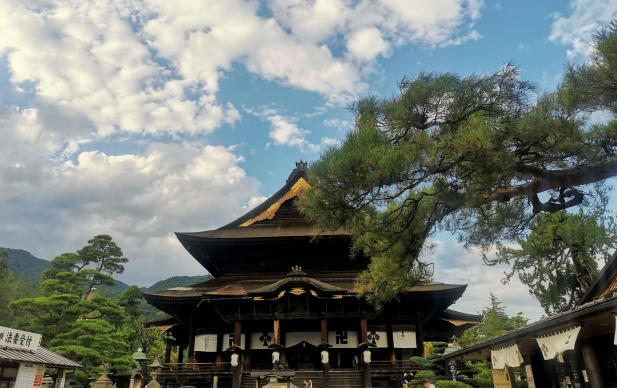
Among the various shrines and temples I have had the chance to visit in my first two months here, Zenkoji Temple truly stands out. Zenkoji Temple, also known simply as Zenkoji, holds a special place as one of Japan’s most significant and revered Buddhist temples, with a history spanning over 1,400 years. Its founding dates back to the 7th century, making it not only Japan’s oldest temple but also one of its most historically important. Zenkoji Temple is nestled in the heart of Nagano City, within Nagano Prefecture.
As an Assistant Language Teacher (ALT), I also get to enjoy a summer break, which provides the perfect opportunity to explore Japan in-depth, unless I have coaching schedules for speech contests requested by my schools. Fortunately, I only had a few such requests, which allowed me to say yes to a good Japanese friend who had invited me to her place in Nagano.
Living in the Kanto area means residing in the bustling city-side of Japan, surrounded by tall buildings, various transportation options such as trains, monorails, and buses. It’s the epitome of urban life. Venturing to Nagano in the Chubu region, however, was a refreshing change. My journey began at Tokyo Station, where I boarded a train bound for Shinjuku Station. From there, I caught a limited express train headed to Chino in Nagano, where a good Japanese friend of mine awaited me.
T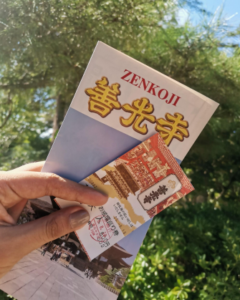 he fare from Tokyo to Chino was approximately 5000 yen. Let me tell you, the two-hour train ride was worth every minute. Leaving the Kanto region behind, I was greeted by breathtaking natural scenery, with mountains and lush greens all around. The serene landscapes along the way felt like something out of a Studio Ghibli movie, as I transitioned from the city to the countryside.
he fare from Tokyo to Chino was approximately 5000 yen. Let me tell you, the two-hour train ride was worth every minute. Leaving the Kanto region behind, I was greeted by breathtaking natural scenery, with mountains and lush greens all around. The serene landscapes along the way felt like something out of a Studio Ghibli movie, as I transitioned from the city to the countryside.
My friend knew how much I like to go to shrines and temples, that is why Zenkoji was on top of the itinerary the moment I got off the train. The whole area of Zenkoji was massive with a lot of halls you can visit. The main hall, usually called “Hondo”, was the first place we went into and taking pictures or videos were strongly prohibited. It was so huge and it houses the relic of a wooden statue of Amida Buddha. We paid a ticket of around 600 yen each to get to experience praying to the center of the main hall and experience the underground passage tour called “okaidan-meguri (お戒壇巡り)” in Japanese.
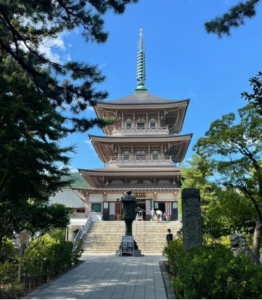 I was totally surprised about the underground passage tour because it was the darkest place, literally pitch dark, I have ever been in my entire life. It was underneath the Hondo and it is said that it is the closest you can get to the wooden statue of Amida Buddha. We were told that the “key to paradise” which is our objective of finding as we go through the dark passage, was right under the Buddha statue.
I was totally surprised about the underground passage tour because it was the darkest place, literally pitch dark, I have ever been in my entire life. It was underneath the Hondo and it is said that it is the closest you can get to the wooden statue of Amida Buddha. We were told that the “key to paradise” which is our objective of finding as we go through the dark passage, was right under the Buddha statue.
So, if you get to touch the key, then more likely you’re very near the wooden statue. And honestly, I didn’t even know if I was able to touch the key because the fear of being inside a small and dark passageway consumed me so much that I was internally freaking out but of course it was worth the experience.
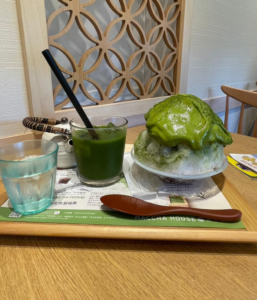 We visited the Zenkoji History Museum hall as well which houses a lot of relics, artifacts that simply brings you back the history of the temple. It shows the rich culture of the people that surrounds Zenkoji and how the temple became a sanctuary of the believers and the people in general. Last year, the temple held the ‘Zenko-ji Maedaichi Honzon Gokaicho’ or more simply, the ‘Gokaicho’, which celebrates the history and heritage of Zenko-ji. They hold it every six or seven years and it’s like a whole month event but after the pandemic hit, last year’s Gokaicho was held for more than over a month which drew millions of visitors and pilgrims.
We visited the Zenkoji History Museum hall as well which houses a lot of relics, artifacts that simply brings you back the history of the temple. It shows the rich culture of the people that surrounds Zenkoji and how the temple became a sanctuary of the believers and the people in general. Last year, the temple held the ‘Zenko-ji Maedaichi Honzon Gokaicho’ or more simply, the ‘Gokaicho’, which celebrates the history and heritage of Zenko-ji. They hold it every six or seven years and it’s like a whole month event but after the pandemic hit, last year’s Gokaicho was held for more than over a month which drew millions of visitors and pilgrims.
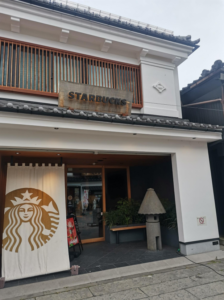 Walking around the vicinity of the temple, it made my heart appreciate the beauty of their spiritual belief, rich culture and love for nature. Interestingly, beyond the entrance of the temple, we found a very good Matcha house in the area and it offers a really good tasting matcha latte, matcha shaved ice and matcha ice cream. It’s a matcha heaven if you like matcha like me. It was my first time to see a Starbucks shop where the exterior design is not at all their usual green-themed walls. The exterior matches the environment surrounding the temple. And as a Sumikko Gurashi lover, I also found an exclusive shop near the temple where they sell goods that are exclusive and can be found only in Zenkoji. I did not miss buying a small souvenir from there too.
Walking around the vicinity of the temple, it made my heart appreciate the beauty of their spiritual belief, rich culture and love for nature. Interestingly, beyond the entrance of the temple, we found a very good Matcha house in the area and it offers a really good tasting matcha latte, matcha shaved ice and matcha ice cream. It’s a matcha heaven if you like matcha like me. It was my first time to see a Starbucks shop where the exterior design is not at all their usual green-themed walls. The exterior matches the environment surrounding the temple. And as a Sumikko Gurashi lover, I also found an exclusive shop near the temple where they sell goods that are exclusive and can be found only in Zenkoji. I did not miss buying a small souvenir from there too.
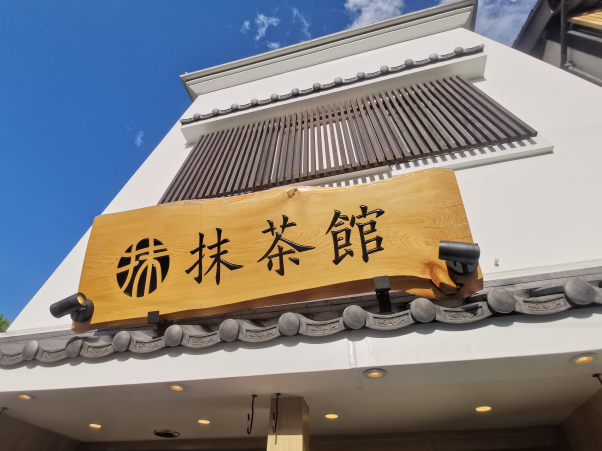
In conclusion, if you want to feel a sense of peace and reverence and if you like shrines and temples like me, you should not miss out on going to Zenkoji Temple in Nagano City. The place is a testament to the legacy of Japan’s rich spiritual heritage and I carried a lot of memories of the temple’s magnificent architecture. Zenkoji Temple left a beautiful and lasting impression on my heart as it allows me to feel peace and serenity in just a short period of time.
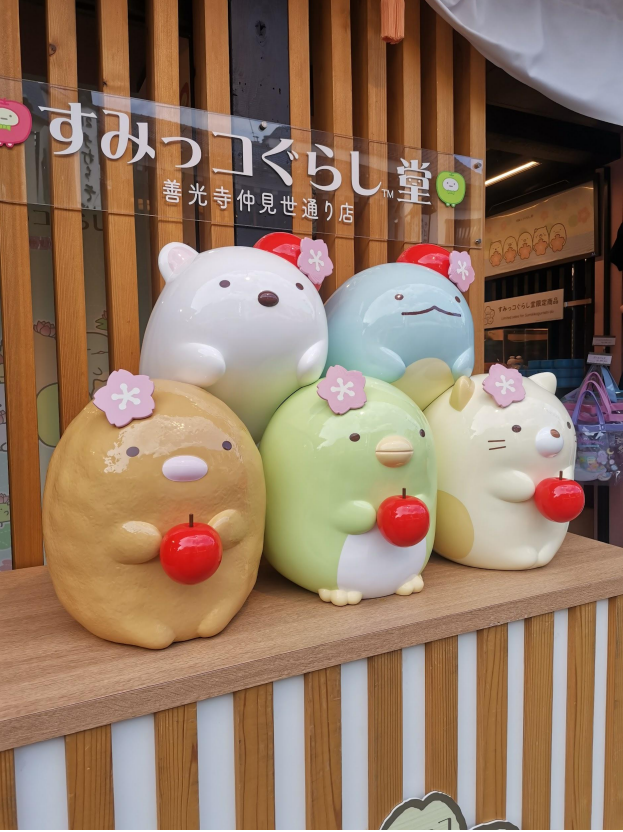
Photo credits:
Additional images provided by the author, used with permission.
All other content (text) created by the original author and © 2023 MUSUBI by Borderlink
Welcome again to Best of MUSUBI, where we revisit articles from the past and breath new life into them with updated information and photos!
Are you a ramen fan? Have you ever had a ramen craving, but weren’t sure exactly what kind you wanted to eat? Have you thought, “man, I wish there was a place I could go to where I could have the pick of the litter for what kind of ramen I want to eat?” Well, you’re in luck! The following list details some of the best places to go to in Japan to get your ramen fix. You may even call it a “Top 5” of sorts.
Now please keep in mind; this is my opinion on the best places, not the best restaurants. I’m sure that your favorite secret, back-alley ramen stand is awesome, but in this article I’m sharing my top overall ramen hotspots. Think of these as the best places to go to then find your new favorite hole-in-the-wall ramen eatery, because the following places tend to be packed with ‘em! So, let’s begin!
Tokyo Ramen Street (Tokyo)
Tokyo Ramen Street is conveniently located in Tokyo Station. I say “conveniently located” because Tokyo Station is in the very heart of the sprawling Tokyo metropolis, but the station complex itself is a labyrinth. Tokyo Ramen Street is situated in an area called Gransta that connects the Yaesu and Marunouchi sides of the station.
Home to eight unique restaurants, the original ones that were present at the street’s initial 2011 opening were all hand-picked, and many of them still remain today. The level of competition between the joints is very high, so you’re guaranteed an amazing bowl of noodles no matter which one you go with. Some of the restaurants in Ramen Street even specialize in crab and prawn ramen dishes. Be aware though- wait times can be long, as this is a popular spot with commuters, so make sure you don’t have anywhere to be if you decide to eat here during peak hours!
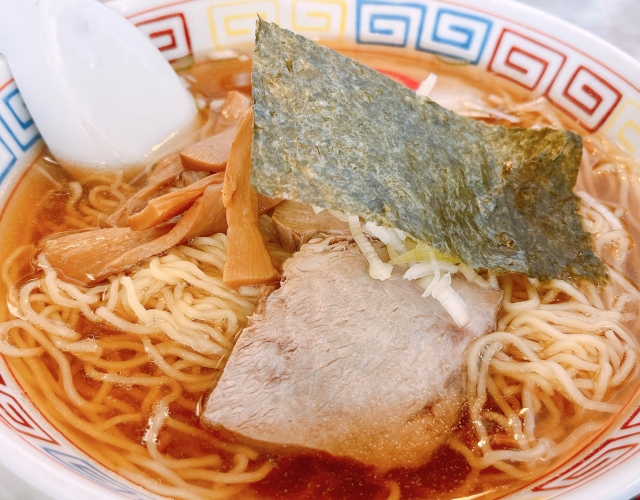
Photo by ちび助
Gansen Ramen Yokucho (Hokkaido)
The historic Gansen Ramen Yokucho, or Original Ramen Alley, is one of Japan’s oldest ramen areas. It’s located in the lively Susukino area of Sapporo, Hokkaido. The birthplace of miso ramen, Gansen Ramen Yokucho began its run in 1951 when seven different ramen restaurants opened for business nearly simultaneously in the same small alley.
As more and more ramen joints began to move in, they started replacing the restaurants that weren’t strictly ramen-focused. The alley soon came to be known as “ramen alley” by locals. Today, Gansen Ramen Yokucho is home to seventeen different ramen joints, all making their own take on the traditional Hokkaido-style ramen. If you’re going to be in Sapporo and want to chow down on a bowl of miso ramen, you just got to do it here!
Dotonbori (Osaka)
The famous food mecca known as Dotonbori located in Osaka is of course home to its fair share of excellent ramen joints. A number of famous ramen restaurants duke it out here for supremacy, serving hundreds of customers a day.
A few more notable joints include Ichiran, one of Japan’s most popular chain brands; Kinryu, a joint with a tonkotsu-base broth and 24-hour service; and Kamukura, whose closely-guarded broth pairs extremely well with kara-age. The next time you plan a Kuidaore excursion in Osaka, make sure to finish it off with a bowl of Ramen here.
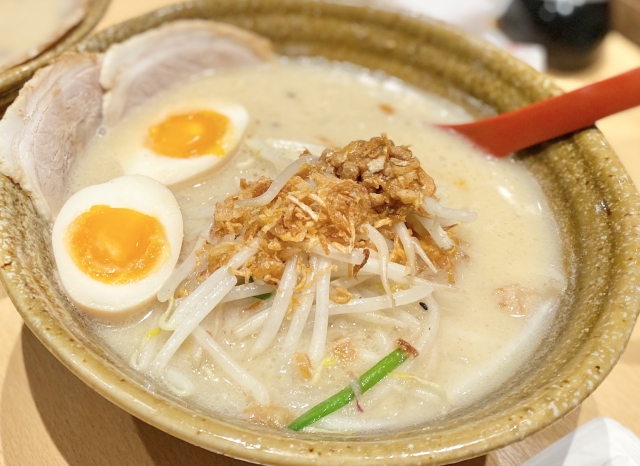
Photo by シンガプーラスマイル
Shin-Yokohama Ramen Museum (Kanagawa)
Founded on March 6th, 1994, the Shin-Yokohama Ramen Museum bills itself as the “world’s first food-themed amusement park”. The goal of the museum is to introduce customers to different kinds of ramen from across Japan in one place, as well as teach the history of the dish.
They even offer a noodle-making class teaching the traditional Chinese method of making ramen noodles! Located 50 minutes from Tokyo or Shinjuku station, this museum is highly recommended for anyone looking to make a quick day trip for something fun to do, and a must-visit for anyone on vacation in the Yokohama area.
Ramen Gakisenku Tokyo Marunouchi (Tokyo)
Literally meaning “ramen battle zone” the Ramen Gakisenku at Tokyo Marunoichi inside KITTE Marunoichi is a short distance away from Tokyo Station. The Ramen Gakisenku is comprised of five different restaurants that each make a different style of ramen: shoyu (soy sauce), miso, tsukemen (ramen served separately from the broth), tonkotsu (pork bone), and spicy ramen.
This means that you can literally get whichever flavor you are looking for in one place! Aside from the soup bases, each joint also serves up its ramen with their own preferred type of noodles and toppings, so this is also a good place for you to go if you’re trying to figure out what kind of noodles you like, and which toppings you love or could do without.
Ramen is truly one of the most diverse foods that Japan has to offer, so being able to find many different kinds in one place is a great chance explore the different flavor palates available in the dish. Hopefully you are able to visit at least one of these places and enjoy what ramen has to offer!
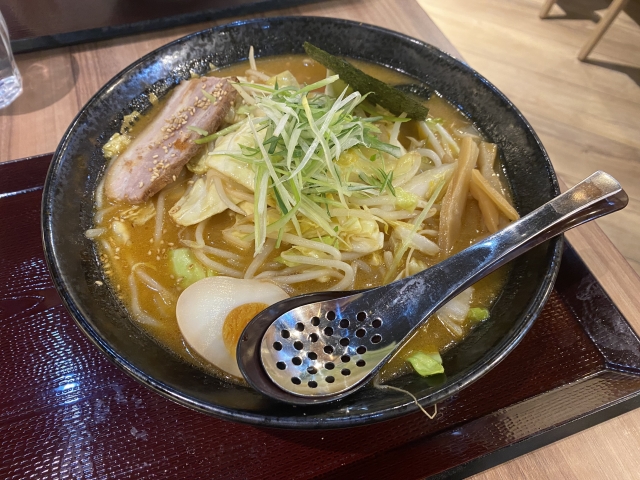
Photo by こーた515
Photo Credits:
Additional photos by ちび助 , シンガプーラスマイル , こーた515
All other content (text) created by the original author and © 2023 MUSUBI by Borderlink
Top photo: kazu_m49 on PhotoAC
Konnichiwa! Welcome to the Land of the Rising Sun, where longevity and good health are deeply rooted in Japanese culture. Let’s embark on a journey to discover the secrets of staying healthy in Japan and embrace the vibrant lifestyle this beautiful country offers!
To stay healthy in Japan, here are my top 10 helpful tips:
1. Eat a balanced diet
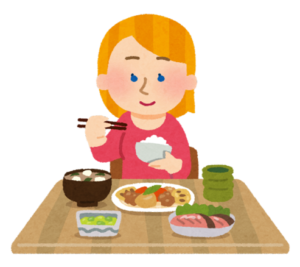
Japanese cuisine is known for its emphasis on fresh, seasonal, and nutritious ingredients. Include a variety of fruits, vegetables, whole grains, lean proteins, and seafood in your diet.
2. Practice portion control
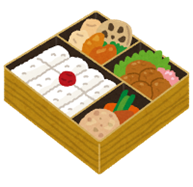
Be mindful of portion sizes, as Japanese meals typically consist of smaller portions compared to Western meals. This can help prevent overeating and maintain a healthy weight.
3. Stay hydrated
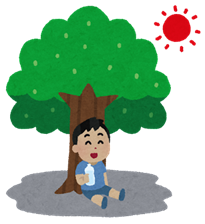
Drink plenty of water throughout the day to stay hydrated, especially during hot and humid summers. Green tea is also a popular and healthy beverage choice in Japan.
4. Engage in regular physical activity

Incorporate exercise into your daily routine. Consider walking or cycling as a means of transportation, joining local sports clubs, or practicing traditional Japanese martial arts like judo or karate.
5. Practice mindful eating
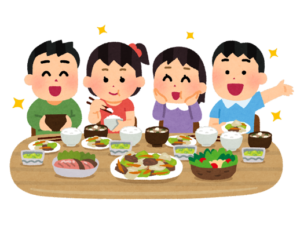
Take time to savor and enjoy your meals. Japanese culture emphasizes mindful eating, which can help you appreciate the flavors and textures of your food while promoting healthy digestion.
6. Get enough sleep

Aim for seven to eight hours of quality sleep each night. Prioritize a consistent sleep schedule and create a comfortable sleep environment to support your overall well-being.
7. Practice good hygiene
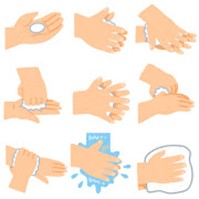
Follow proper hygiene practices, such as washing your hands regularly, especially before meals. Carry hand sanitizer for times when soap and water are not readily available.
8. Take advantage of public baths
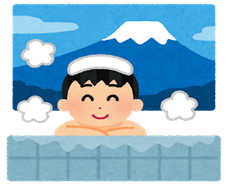
Visit traditional Japanese public baths, called “onsen” or “sento,” which are known for their therapeutic benefits. These hot springs or communal baths can help relax your body, relieve stress, and improve circulation.
9. Stay active mentally
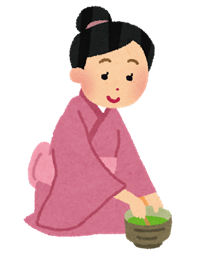

Engage in activities that keep your mind sharp, such as reading, solving puzzles, or learning a new skill. Japan offers a rich cultural heritage, so exploring traditional arts like calligraphy or tea ceremonies can also be mentally stimulating.
10. Seek preventive healthcare

Take advantage of Japan’s healthcare system and schedule regular check-ups with a local doctor. Stay up-to-date on vaccinations and follow any necessary health precautions.
Remember, these tips are general guidelines for staying healthy. It’s always a good idea to consult with a healthcare professional for personalized advice based on your specific needs and medical history. Live healthy and live well!
Photo credits:
Top photo: kazu_m49 on PhotoAC
Additional images provided by Irasutoya
All other content (text) created by the original author and © 2023 MUSUBI by Borderlink
Top photo: Sousuke48 on PhotoAC
As a country of four seasons, Japan has many things to enjoy in it year-round. And the fall or autumn is no different. Here are some of the best places to visit and the best festivals to enjoy during the fall season!
Where to go
Japan offers a wide range of beautiful places to visit during the fall, with stunning autumn foliage and pleasant weather. Here are some great destinations to consider:
1. Kyoto: Kyoto is perhaps the most famous destination for fall foliage. Visit iconic spots like Kinkakuji (the Golden Pavilion), Arashiyama Bamboo Grove, and the Philosopher’s Path to see the vibrant red and orange leaves.
2. Nikko: Nikko, in Tochigi Prefecture, is known for its picturesque fall scenery, especially around Toshogu Shrine and Lake Chuzenji. The vibrant colors of the leaves complement the historic architecture.
3. Hokkaido: In northern Japan, Hokkaido offers beautiful fall foliage with a more relaxed atmosphere. Sapporo and the Biei and Furano regions are great places to enjoy the colors.
4. Daisetsuzan National Park: This national park in Hokkaido is famous for its stunning autumn foliage, rugged mountains, and hiking trails.
5. Hakone: Close to Tokyo, Hakone is known for its onsen (hot springs) and offers scenic views of Mount Fuji, especially during the fall.
6. Tohoku Region: This northern region boasts beautiful foliage in places like Aomori, Sendai, and Yamagata. The Oirase Gorge in Aomori is particularly famous for its autumn beauty.
7. Shirakawa-go and Gokayama: These UNESCO World Heritage-listed villages in the Gifu and Toyama Prefectures offer stunning landscapes with traditional thatched-roof farmhouses amidst autumn colors.
8. Koyasan (Mount Koya): This sacred mountain in Wakayama Prefecture is a serene place to enjoy the fall colors, especially around the temple complexes.
9. Okayama: Visit the Korakuen Garden in Okayama, one of Japan’s three great gardens, which is especially beautiful in the fall.
10. Yakushima: Although not known for fall foliage, this subtropical island’s lush greenery and ancient cedar trees are beautiful year-round, making it a unique destination.
11. Kanazawa: In Ishikawa Prefecture, Kanazawa offers beautiful gardens like Kenrokuen and quaint samurai districts with autumn colors.
12. Nara: Explore Nara Park, home to friendly deer and surrounded by beautiful trees that turn golden and red in the fall.
13. Ise-Shima: Known for its rich history and coastal beauty, this area is enchanting during the fall season, especially around Ise Grand Shrine.
14. Yoshino: The Yoshino region in Nara Prefecture is renowned for its cherry blossoms in spring, but it’s equally beautiful in the fall when the leaves change color.
15. Gero Onsen: Located in Gifu Prefecture, this onsen town is surrounded by beautiful foliage in the fall, offering a relaxing and scenic retreat.
From my own cherished memories, visiting Kyoto in the fall is an unparalleled delight. It’s the season when you can embark on a journey to Fushimi Jukkokubune.
A serene boat ride surrounded by the resplendent hues of autumn, as the vibrant leaves paint a breathtaking panorama. Spring is undoubtedly captivating, but autumn has a unique allure. It’s a paradise for photographers, a canvas for unforgettable moments.
Fushimi Jukkokubune isn’t just a destination; it’s an enchanting experience you won’t want to miss. The memories and photographs you’ll collect are as timeless as the seasons themselves.”
When planning your trip, be sure to check the timing of the fall foliage, as it varies by region and can change from year to year. Typically, the peak of autumn colors in Japan falls between late October and early December.
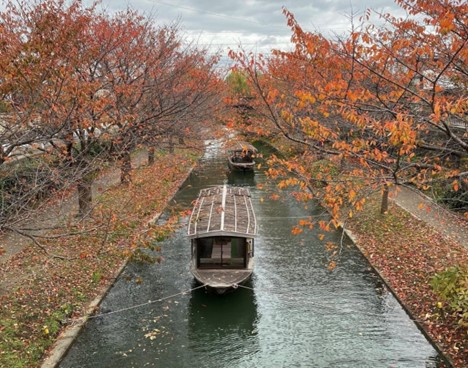
What to do
There are also a variety of festivals and events during the fall season. Here are some of the most popular ones:
1. Jidai Matsuri (Festival of the Ages) – Kyoto: Held on October 22nd, this is one of Kyoto’s most famous festivals. Participants dress in historical costumes representing various periods in Japanese history and parade through the city.
2. Kurama Fire Festival – Kyoto: Held on October 22nd, this event involves a procession of torches through the streets of Kurama, a mountain town. It’s a spectacular and unique event that creates a mystical atmosphere.
3. Takayama Festival – Gifu Prefecture: This two-day festival occurs in early October and showcases ornate floats and traditional performances in the historic town of Takayama.
4. Nagasaki Kunchi – Nagasaki: This festival runs from October 7th to 9th and features performances, dances, and processions with beautifully decorated floats representing various Nagasaki neighborhoods.
5. Hirosaki Castle Chrysanthemum and Autumn Foliage Festival – Aomori: Held in early October, this festival features thousands of meticulously cultivated chrysanthemum flowers and beautiful autumn foliage.
6. Meiji Shrine Outer Garden Autumn Garden Festival – Tokyo: This event features impressive illuminations and light-up displays in the beautiful Meiji Shrine Outer Garden during the fall season.
7. Nikko Toshogu Shrine Grand Autumn Festival – Tochigi Prefecture: This festival in Nikko takes place in October and includes various performances, processions, and ceremonies at the Toshogu Shrine.
8. Ise Jingu Autumn Grand Festival – Mie Prefecture: Held in October, this festival celebrates the harvest season and includes various ceremonies and processions at Ise Grand Shrine.
9. Kyoto Arashiyama Hanatouro – Kyoto: This event, typically held in December, illuminates the Arashiyama Bamboo Grove and the surrounding area with thousands of lanterns and light displays.
10. Kanazawa Hyakumangoku Festival – Kanazawa: Held in early November, this festival celebrates the city’s history with parades, traditional performances, and food stalls.
11. Yabusame (Horseback Archery) Festivals – Various locations: Yabusame events, where archers on horseback shoot at targets, are held in various places during the fall season.
12. Kawasaki Halloween Parade – Kanagawa Prefecture: While not a traditional festival, this Halloween parade in Kawasaki is one of the largest in Japan and features creative costumes and lively street performances.
Please note that the exact dates of these events can vary from year to year, and/or cancelled so it’s essential to check the specific dates and details for each festival you’re interested in attending.
Photo Credits:
Top photo: Sousuke48 on PhotoAC
Additional photo provided by Christopher Banayat, used with permission.
All other content (text) created by the original author and © 2023 MUSUBI by Borderlink
The moment we arrive in Japan, many of us would have questions of how we get access this place or how long it takes from our starting point. We even ask ourselves on our commute, “Which is easier to use?” “How much does it cost?” Well, there is no need to fear, because there are many ways to get through your destination. In every travel throughout Japan, we get to discover new places and learn unique experiences. Some of the cities we would like to discover are remote, so there may be only one way to get there. But we are there for the experience and learning, so let’s check them out.
Highway Bus
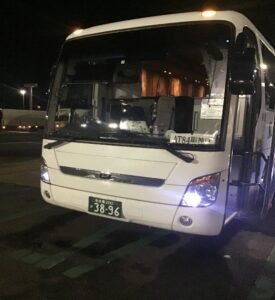
(A highway bus parked at Ebina Service Area. Photo by me, taken on July 30, 2023)
The first method to get to your city destination in by bus. There are different types of buses that you can take while travelling in Japan. One of them includes an overnight highway bus, where its departure is scheduled late at night and the arrival will be early morning the next day. The disadvantage is that travel time takes much longer; one example is from Tokyo to Osaka is about 8 hours travel time.
The advantage of taking buses is that you can save a lot of money when you make reservations ahead of time. Depending on the day you will travel, prices can range from ¥3300 to ¥10000 (www.yoyakutol.com) but there are different days you an choose when you want to travel. One thing to remember is that prices change over time, so it is best to reserve your seat ahead of time.
Trains/Shinkansen
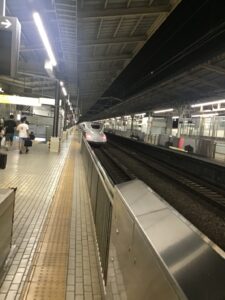
(A Shinkansen leaving Shin-Yokohama station. Photo by me, taken on July 28, 2023)
Travelling by train is another popular method of transportation in Japan. Major stations in Japan have their timetables and destinations posted so you have an idea of what time to catch the next train and where will be your next stop. If you are travelling within neighboring prefectures, the regional lines (example, JR Keihin-Tohoku Line running between Saitama, Tokyo, and Kanagawa, JR Kyoto/Kobe Line running between Shiga, Kyoto, Osaka, and Hyogo) will be your best friend along the way when visiting cities within the region.
Various lines will give you more opportunities to explore the neighboring prefectures and other parts of the prefecture. If you are looking to travel the entire country by train, the Shinkansen will be your go-to ride. The Tokaido-Sanyo Shinkansen (running between Tokyo and Hakata) is the most travelled route within the country so whenever you are planning to visit Kyoto, Osaka, or as far as Kagoshima, Shinkansen will be at your service. Remember that when you have the JR Pass with you, there are some restrictions enforced when using the Pass for the Shinkansen.
There are also other Shinkansen lines that you can take whenever you want to explore the Tohoku, Hokuriku, or Kyushu regions. Asie from the Tokaido-Sanyo Shinkansen, the other Shinkansen lines you can take are as follows: Tohoku Shinkansen, Hokkaido Shinkansen, Akita Shinkansen, Yamagata Shinkansen, Joetsu Shinkansen, Hokuriku Shinkansen, Kyushu and Nishi-Kyushu Shinkansen. These are the Shinkansen lines that will connect you to different cities within Japan and widen your network. The Shinkansen also comes in a huge competition with domestic air travel in terms of fares so this can open another option for travelling within the country.
Air Travel
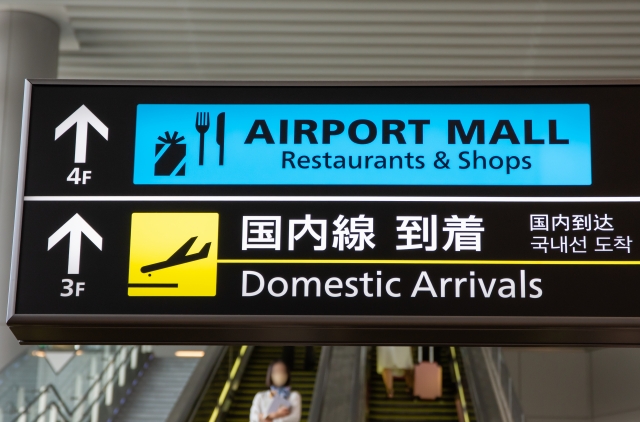
Photo by まるう
Another method of travel within Japan is by air, where you can visit some cities that are not accessible by train or may be accessible but takes a longer time. The 2 main carriers of Japan are Japan Airlines (JL, JAL, Nihon-Koku 日本航空), and All Nippon Airways (NH, ANA, Zen Nippon Kuyu or Zenniku全日空), plus other low-cost carriers. For example, when you are planning to visit Hokkaido, there are options to take the Shinkansen or travel by plane all the way to Sapporo.
It also gives you the decision to which one will be faster and more economical in terms of price. Whether you look for the adventure or to save some money, there are viable options to choose when travelling. If you are wanting to visit Okinawa, your only option is by plane, as it is in the southern part of Japan. Travelling by air offers competitive prices and gives you the opportunity to earn some mileage points whenever you sign up for membership.
Conclusion
Travelling within Japan gives you the opportunity to discover new things and give a better understanding of their culture. Whether you are in a budget or looking for an adventure to remember, these are some of the options you can choose for your trip. Buses and trains will keep you grounded and present more opportunities to explore even more; air travel gives you the peace of mind that you will get to your destination faster and can save you some cash. So let’s pack up and plan your getaway trip to Japan! We look forward to seeing you here!
Photo Credits:
Additional photos provided by the author (used with permission) and まるう
All other content (text) created by the original author and © 2023 MUSUBI by Borderlink
Welcome to Best of MUSUBI, where we revisit articles from the past and breath new life into them with updated information and photos!
Osaka has a lot going for it, from its unique culture and history, the fun and energetic people and its many tourist sights. Among the things that make Osaka well-known and great is that its regional foods are among the best in all of Japan. Let’s dive in deeper and talk about two of Osaka’s great yaki (grilled) foods.
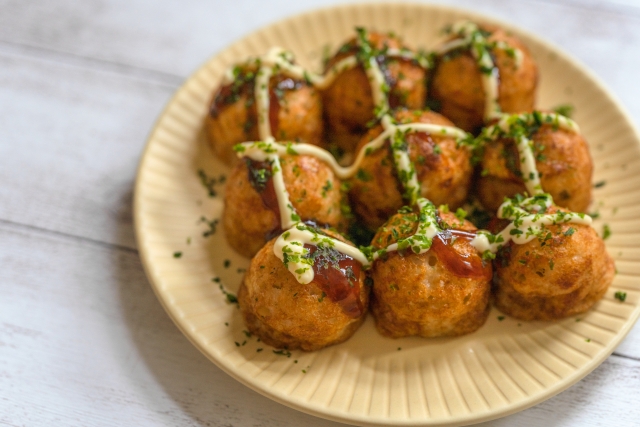
Photo by まめ39
Arguably the most famous dish from Osaka is Takoyaki. Takoyaki is a ball of grilled dough with tako or octopus pieces inside. This dish is said to have originated in Osaka in the 1930’s. It is very well known even outside of Japan because of its unique shape and delicious nature. These molten hot balls of dough are eaten with dancing bonito flakes on top of them and drizzled with a special savory sauce and mayonnaise. This dish is not only great to eat, but fun to make, with takoyaki parties being a popular occurrence where the patrons help make the dish on a unique grill.
Okonomiyaki is less popular as a specifically Osakan dish, but still a well-known specialty in the area. This dish has a longer history, dating to around the 1600’s. Okonomiyaki is a pancake-looking dish, made up of chopped cabbage, batter, pork or seafood, bonito flakes, Okonomiyaki sauce (similar to the savory Takoyaki sauce) and mayonnaise, again much like its more popular food brother Takoyaki. This delicious food is made by mixing the basic ingredients in a bowl then throwing them on a hot griddle and topping them with the meat or seafood, then flipping once until it’s done on both sides.
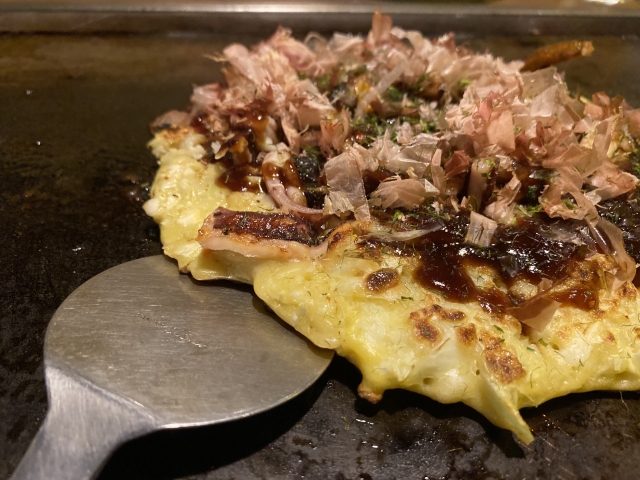
Photo by ミックモン
This regional food has become popular in many parts of Japan and has spawned some regional differences. The two most popular are Hiroshima-style, which is made mostly the same, except yakisoba is also cooked along with and mixed into the Okonomiyaki. An egg is also used to top the dish, giving it a unique look from its Osakan counterpart. The other style is Tokyo’s “monjayaki” where the process is similar, but the outcome is much more gooey.
Luckily, these regional Osaka foods are so well-known and universally enjoyed they can be found all over Japan and maybe even in your home country as well. Please be sure to enjoy these delicious dishes when planning your next trip to Osaka!
Photo Credits:
Additional Photos by まめ39 and ミックモン
All other content (text) created by the original author and © 2023 MUSUBI by Borderlink
